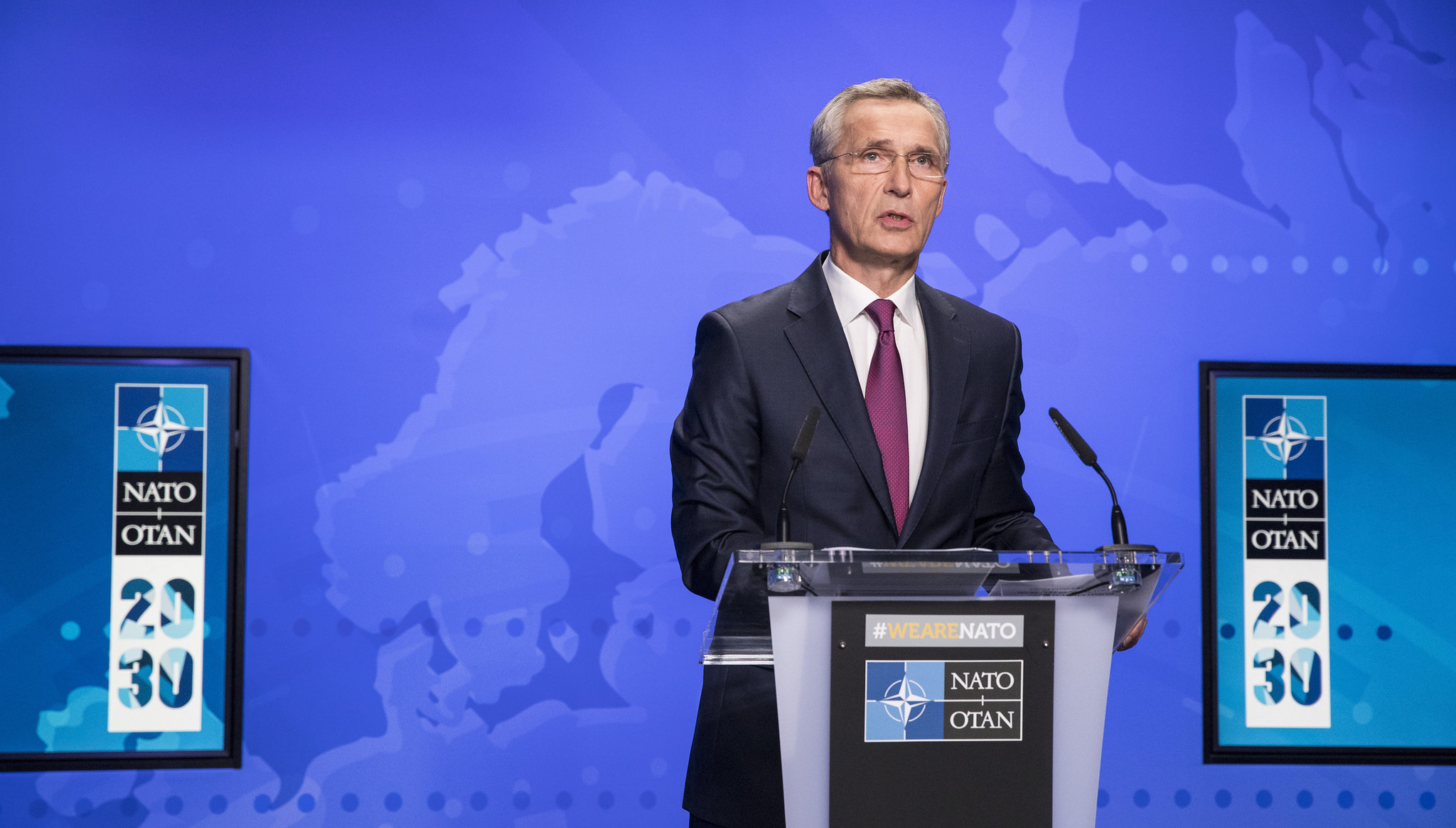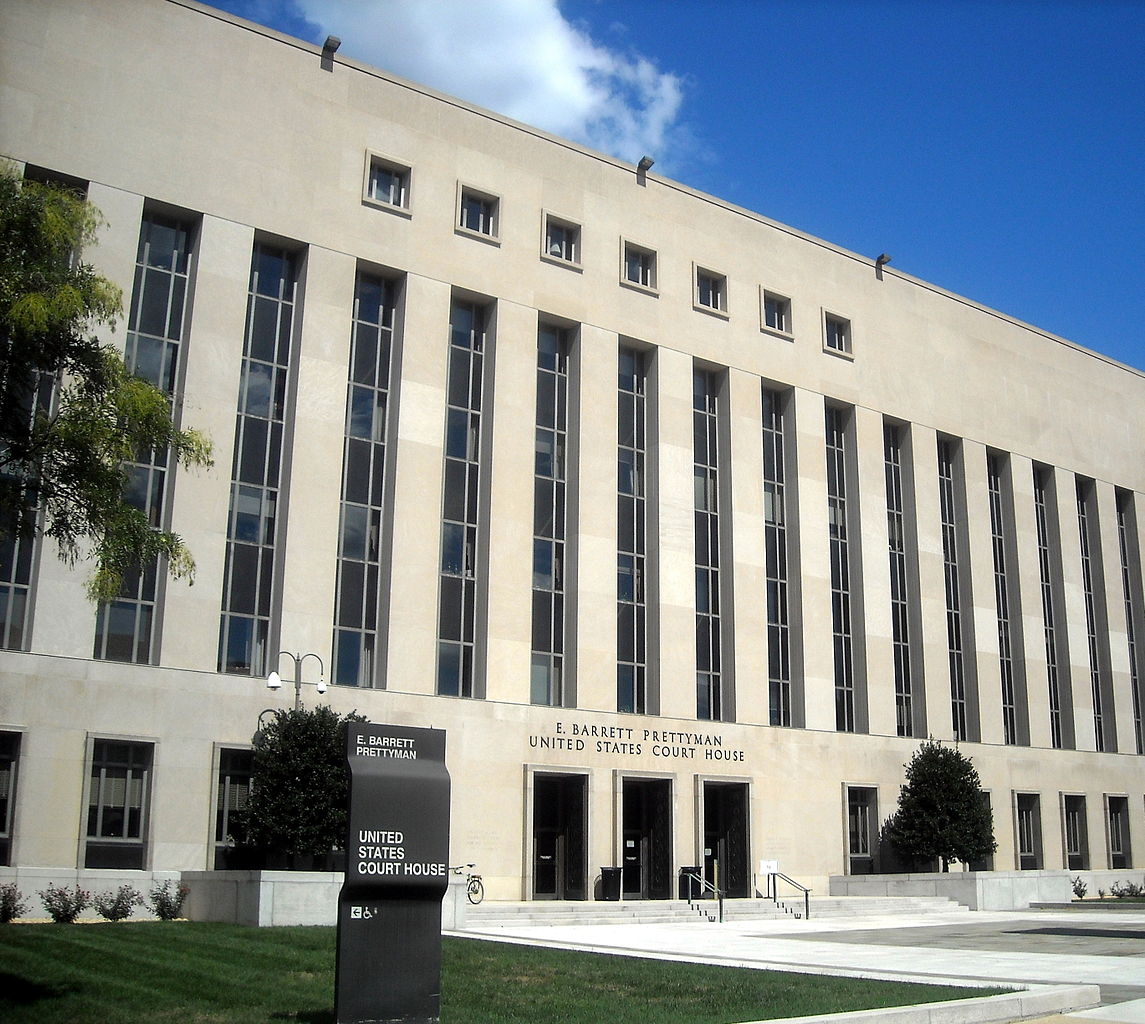Three Things to Know About NATO’s Role in Responding to the Ukraine Crisis
As events continue to unfold, it’s helpful to rehash some relevant background about NATO’s role.

Published by The Lawfare Institute
in Cooperation With

After weeks of high-stakes diplomacy and “will he or won’t he” global speculation, Russian President Vladimir Putin has launched an invasion of Ukraine. As the international community begins to grapple with the consequences of what some are calling the “gravest security crisis on the European continent since World War II,” eyes are on Washington and Brussels to see how the NATO Alliance will respond.
As events continue to unfold, it’s helpful to rehash some relevant background about NATO’s role. Here are three things you need to know about NATO’s role in the unfolding crisis:
1. Is NATO under attack? No. It’s important to remember that Ukraine is not a member of the alliance, despite its long-stated ambition to become one. First and foremost, this means that NATO’s famous Article 5 collective defense clause (that is, “an attack against one is an attack against all”) is not at play here.
But NATO is far from unaffected given that four of its members (Poland, Slovakia, Hungary and Romania) border Ukraine and have (with the exception of Hungary) together with Bulgaria, Czech Republic, Estonia, Latvia, and Lithuania already invoked Article 4, the alliance’s consultation clause. In response, NATO Secretary General Jens Stoltenberg convened an extraordinary session of the North Atlantic Council (NAC), NATO’s governing political body this morning (local time).
Article 4—which states, “The Parties will consult together whenever, in the opinion of any of them, the territorial integrity, political independence or security of any of the Parties is threatened”—has been invoked seven times since the alliance’s founding in 1949. Consultation in this case can mean many things, including the decision to adopt additional security measures along the alliance’s border.
Prior to the Feb. 24 invocation, the last time an ally invoked the consultation clause was exactly two years ago in February 2020 when Turkey did so following the loss of several Turkish soldiers in Syria. (Half of all Article 4 invocations to date have been made by Turkey.)
This is not the first time that a NATO member has invoked Article 4 over Ukraine. Back in 2014, Poland did so following Russia’s invasion of Crimea.
Any additional defensive measures taken by NATO in the coming days and/or weeks to buttress the security of its members will likely therefore be authorized under Article 4.
2. So, does that mean NATO won’t act? Not exactly. NATO is responding to Russia’s unprovoked aggression against Ukraine in real time by taking steps to reinforce the security of its members along its eastern flank.
For several weeks now, Washington and its allies have been deploying additional forces—personnel and equipment—to reinforce the Enhanced Forward Presence battlegroups that were established by NATO in the wake of Russia’s invasion of Crimea in 2014.
The purpose of these reinforcements is threefold: first, to deter Russia from escalating—either intentionally or by accident—the situation along the NATO-Russia border; second, to reassure uneasy eastern members of the alliance who have long feared the developments of the past 24 hours; and third, to help defend these member countries should Russian forces penetrate alliance territory.
The battlegroups represent just one of the many so-called adaptation measures the alliance took in the wake of Russia’s annexation of Crimea in 2014. Other notable steps included creating the Very High Readiness Joint Task Force (VJTF), a rapidly deployable multinational brigade supported by air, maritime, and Special Forces, currently led by France. Considered the “tip of the spear” of NATO’s Response Force (NRF), the VJTF currently includes forces from France, Germany, Poland, Spain and Portugal.
At the time of this writing, the NAC has activated the alliance’s defense plans but not yet the VJTF or other elements of the NRF. The decision to do so would be a serious move, one that requires the express support of Washington and is, therefore, unlikely to be announced until the NATO leaders have had a chance to confer together, tomorrow.
3. What happens now? Following a hastily convened session of the NAC this morning, NATO Secretary General Jens Stoltenberg—who is due to retire in September—announced a virtual leaders’ meeting will be held tomorrow among the alliance’s 30 heads of state and government. As noted above, among the issues expected to be discussed are whether or not to activate the VJTF and/or other elements of the NRF. The former was last activated in August 2021 to help support the evacuation of Afghans who worked alongside NATO allies in Afghanistan.
Activating the VJTF now would be a much larger endeavor and one that could risk escalating tensions with Russia.





